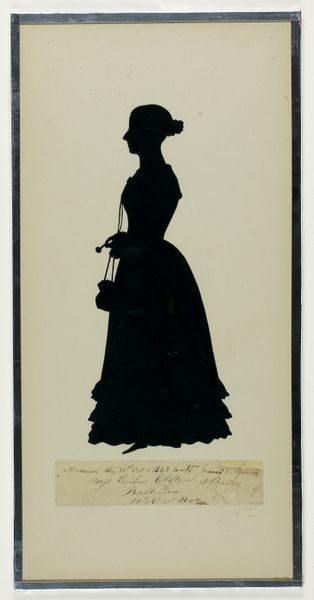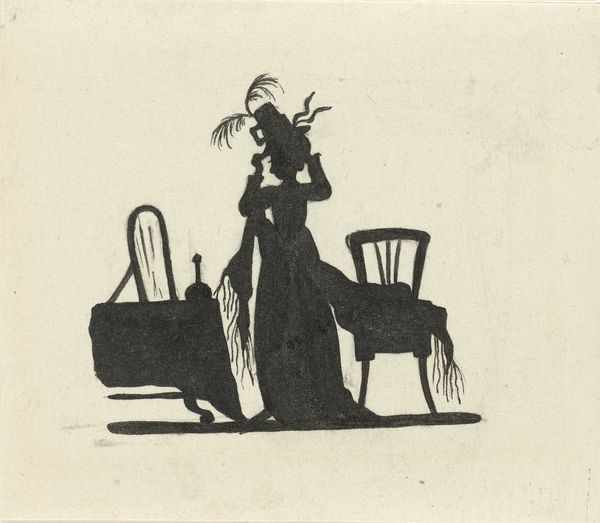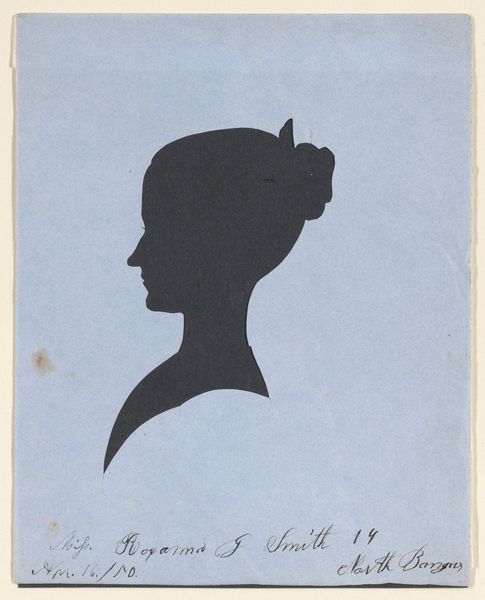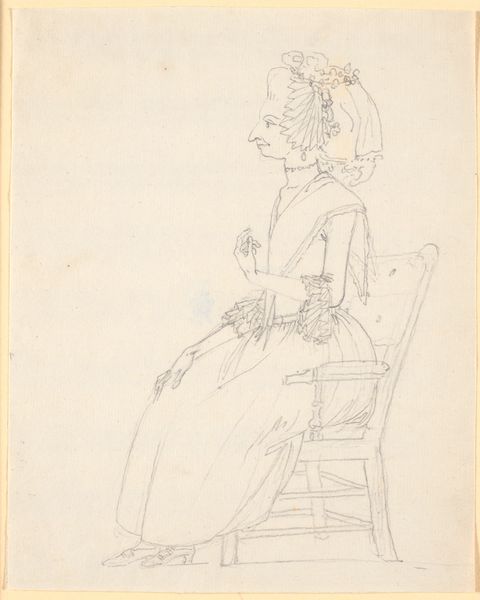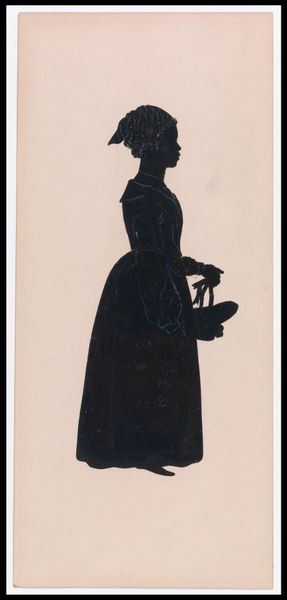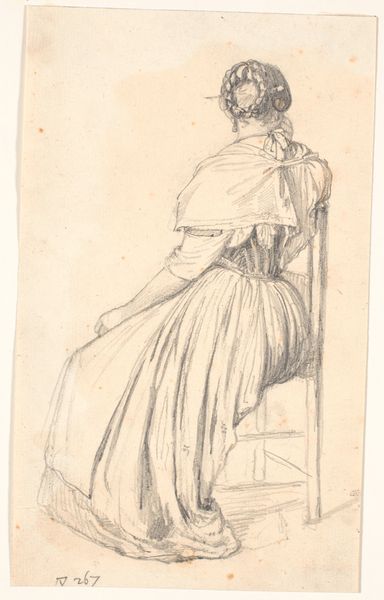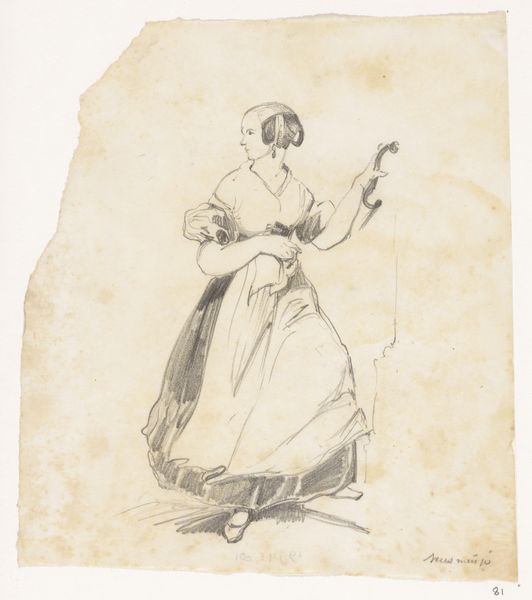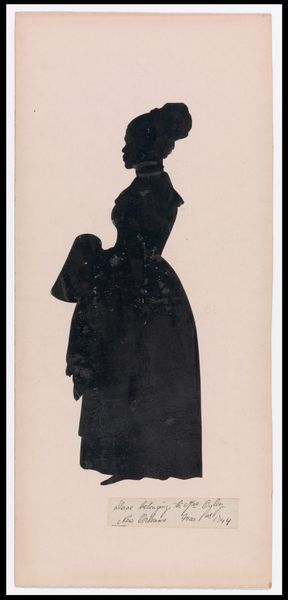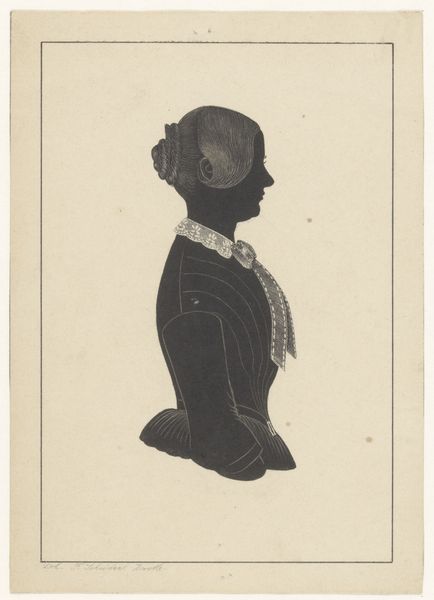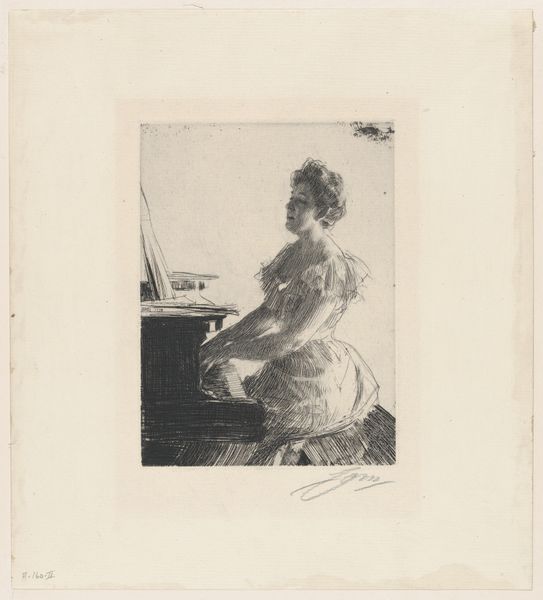
drawing, print, paper
#
portrait
#
drawing
# print
#
figuration
#
paper
#
romanticism
#
genre-painting
Dimensions: Image: 6 15/16 × 5 13/16 in. (17.7 × 14.7 cm) Sheet: 9 5/16 × 7 11/16 in. (23.6 × 19.5 cm)
Copyright: Public Domain
Editor: This silhouette by Auguste Edouart, “Maria Gracia London,” was made in 1837. The contrast between the stark black silhouette and the white background is so striking. What visual stories can we uncover in this portrait? Curator: The power of silhouette resides in its reduction to pure form, inviting projection. What details do you notice around her? The quill, books, even what seems to be a teacup, are they merely props? Editor: Perhaps they speak to her character, or aspirations. A woman engaged with the written word and intellect. Curator: Exactly! Think of how objects accrue symbolic weight. What does literacy represent for women in 1837? What might a book signify in contrast to the trappings of domestic life – teacups and elaborate gowns? Editor: It feels like it suggests a breaking away from the norm, or perhaps embracing both worlds? I also wonder why the artist chose silhouette – did it have significance then? Curator: The Romantic era favoured emotional expression. Silhouettes were accessible and reproducible; in that way they made portraiture democratic. Everyone can recognize their shadow. What psychological associations does that evoke? Editor: Hmmm, the shadow self, perhaps? It definitely adds an air of mystery… So much information conveyed with so little. It makes you wonder what Maria Gracia was writing! Curator: Indeed. And how silhouette plays with presence and absence. It prompts contemplation of identity and representation across time. Editor: I see the layers so clearly now. Thanks, I definitely see the visual language here.
Comments
No comments
Be the first to comment and join the conversation on the ultimate creative platform.
